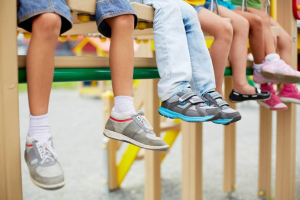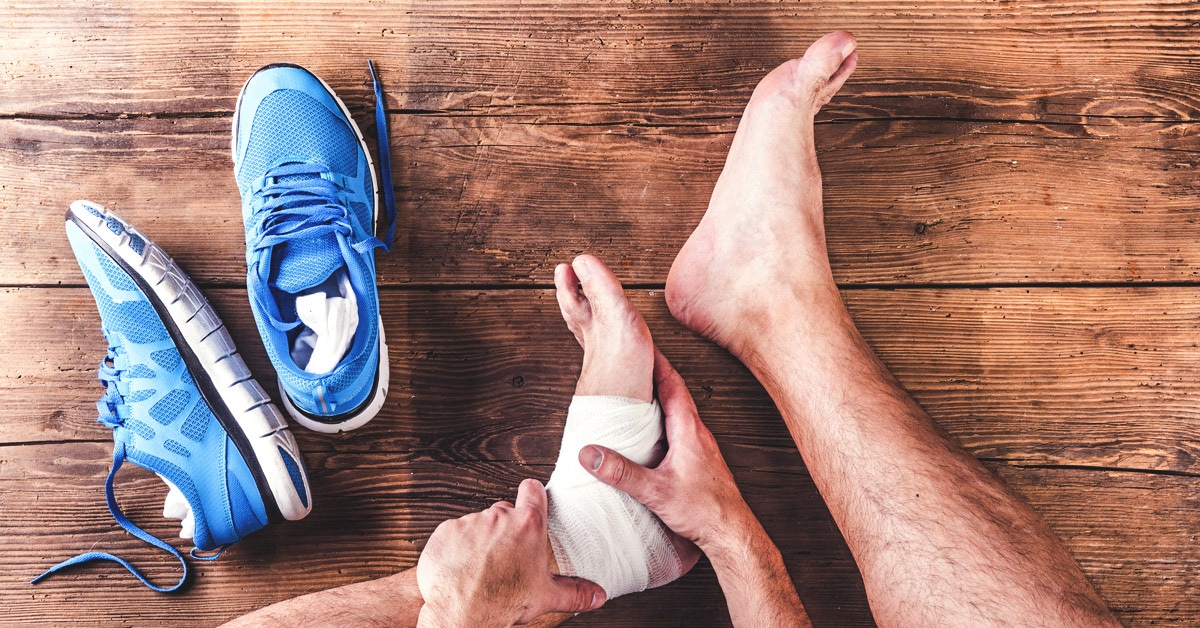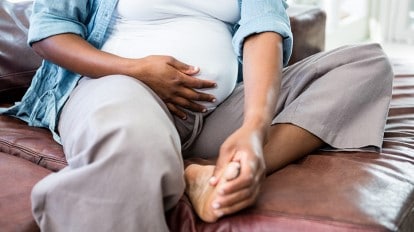It is common for a child’s foot to grow a size or two within six months
 With kids back in school after a summer of bare feet and sandals, parents are shopping for shoes for feet that seem to have grown longer in just a few months. To help busy parents with shoe choices, doctors at Medical and Surgical Foot and Ankle Care recommend some simple guidelines to prevent or minimize possible foot problems from inappropriate shoes, such as painful ingrown toenails, blisters, heel pain and flat feet.
With kids back in school after a summer of bare feet and sandals, parents are shopping for shoes for feet that seem to have grown longer in just a few months. To help busy parents with shoe choices, doctors at Medical and Surgical Foot and Ankle Care recommend some simple guidelines to prevent or minimize possible foot problems from inappropriate shoes, such as painful ingrown toenails, blisters, heel pain and flat feet.
“When choosing kids’ shoes, size and shock absorption are the key considerations, especially if your child has flat feet that can worsen from improper fitting or worn-out shoes,” says Dr. Keith Naftulin, DPM, a member of the American College of Foot and Ankle Surgeons (ACFAS). “Also, a child’s foot can grow a size or two within six months, so it’s critical to allow room for growth in the toe box—about a finger’s width from the longest toe.”
Naftulin says snug shoes put pressure on the toes, causing ingrown nails. “The nail compresses and grows down into the skin.” Infection can occur when an ingrown nail breaks through the skin.
“If there’s pain, redness and fluid draining from the area, it’s probably infected,” adds Dr. Naftulin. “The ingrown nail can be removed in a simple, in-office procedure. Don’t try to remove a child’s ingrown nail at home; this can cause the condition to worsen.”
Tight-fitting shoes also cause blisters, corns and calluses on the toes and blisters on the back of the heels. “Never buy shoes that feel tight and uncomfortable in the store,” says Naftulin. “Don’t assume they will stretch or break in over time.”
Conversely, he notes that shoes that are too loose can cause problems, too. “If a shoe is too loose, the foot slides forward and puts excessive pressure on the toes.”
Naftulin also recommends parents carefully inspect both new and old shoes to check for proper cushioning and arch support. “Shoes lose their shock absorption over time, and wear and tear around the edges of the sole usually indicates it’s worn out and should be replaced,” says Naftulin. “If a child keeps wearing worn-out or non-supportive dress or athletic shoes, it elevates the risk for developing heel pain, Achilles tendonitis and even ankle sprains and stress fractures.”
A good tip for parents when buying new shoes: The toe box should flex easily, and the shoe shouldn’t bend in the middle of the sole. For children with flat feet, Naftulin says parents should buy oxford, lace-up shoes that have enough depth for an orthotic insert, if necessary.
“Unfortunately, there isn’t much choice for kids with flat, wide feet. They need shoes with a wide toe box and maximum arch support and shock absorption,” he said. “Slip-on loafers aren’t right for them.”
If you suspect you or your children experience foot discomfort, call Medical and Surgical Foot and Ankle Care, PC at 303-932-7957 for an evaluation. Visit footpower.com to schedule a visit and receive a free shoe horn to extend the life of your shoes!






